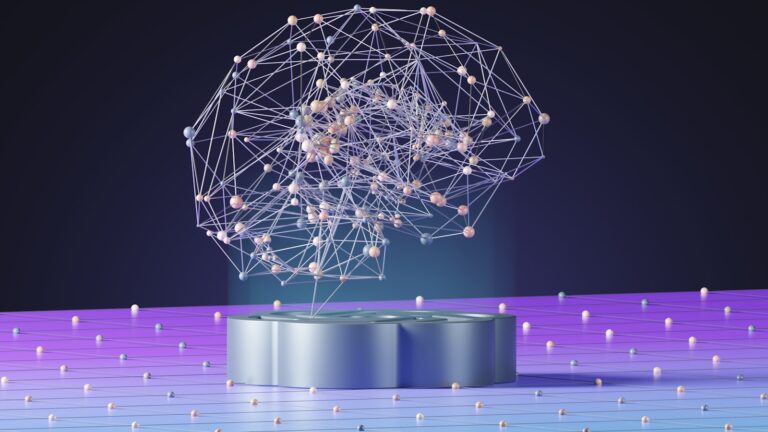For decades, the backbone of computing was traditional programming—a world governed by logic, rules, and strict instructions. In this conventional approach, human programmers wrote step-by-step commands that computers followed religiously. Every operation had to be explicitly defined, whether it was calculating the sum of two numbers or sorting a list alphabetically. This made programming a precise science, but also a rigid one. If a rule was missing or a situation wasn’t accounted for, the program would break or produce incorrect results. The computer, in essence, could only do what it was told. This rule-based paradigm worked brilliantly for well-structured problems like mathematical computations, database management, and repetitive automation tasks. However, it began to fall apart when faced with unstructured data—like human language, images, sounds, or abstract decision-making—because these do not follow clean rules or fit neatly into if-else logic. Writing explicit rules for understanding sarcasm in a tweet or recognizing a cat in a photo is not just difficult—it’s nearly impossible. There are too many edge cases, exceptions, and nuances. This is where traditional programming reached its limitations, setting the stage for something fundamentally different: learning-based systems like Generative AI.
Generative AI, powered by transformer architectures and deep learning, ushered in a radical departure from how we traditionally built software. Instead of humans dictating the rules, the system learns patterns directly from data. This is a seismic shift in the philosophy of computing. In the old world, knowledge was encoded into a program through human labor and logic; in the new world, knowledge is absorbed by the machine from vast oceans of data. In this paradigm, a generative model like GPT is not given grammar rules or dictionaries to understand English. Instead, it ingests billions of sentences and figures out, statistically, what tends to come next after any given sequence of words. It doesn’t know language in a human sense—it doesn’t know what a noun is or what a subject-verb agreement means. Yet, because it has seen so many examples, it produces text that adheres to these rules with stunning fluency. It can answer questions, summarize documents, compose poetry, and even mimic specific writing styles—all without being programmed explicitly to do so. The learning replaces hard-coding. In doing so, it transcends traditional limitations, especially in ambiguous domains like creativity, natural language, and vision.
This shift from rules to learning also transforms how we interact with machines. Traditional programming required programmers to learn complex syntax and languages like C++, Java, or Python. Every interaction was mediated through code. With generative AI, interaction becomes natural and conversational. You can now tell a model in plain English, “Write me a short story about a dragon who learns to code,” and it will oblige—not because it was programmed to write stories about dragons, but because it learned how storytelling works from millions of prior examples. This is not merely automation; it’s intuition at scale. It’s as though the machine has developed a “feel” for language, despite lacking any awareness or intent. The interface between human and machine is now defined not by commands but by communication. This allows even non-programmers to harness the power of computation, opening the floodgates of creativity and productivity in ways that traditional software never could.
Another profound difference lies in adaptability. Traditional software is brittle—change one rule or add a new use case, and you risk breaking the whole system. Generative AI, on the other hand, is inherently flexible. Need a customer support bot in a new language? You fine-tune the model with new data. Want to change the tone of responses from formal to casual? A few examples can guide the model’s behavior. This adaptability comes not from rewiring code but from retraining or fine-tuning, making the system dynamic and responsive rather than static and pre-defined. Furthermore, because generative AI is probabilistic rather than deterministic, it can offer multiple solutions to a single problem, each nuanced and context-aware. In contrast, traditional programs can only follow the path they’re programmed to follow. Generative AI simulates something closer to human ambiguity and interpretation, which is essential for real-world applications like conversation, art, and decision-making.
Yet, the implications of this transition go beyond just technology—they challenge our foundational ideas of intelligence, creativity, and authorship. In rule-based programming, the human was the creator; the software merely followed instructions. In generative AI, the machine becomes a co-creator. It contributes novel text, images, code, and insights based on what it has learned. This blurs the boundary between tool and collaborator. When a generative model composes a symphony or suggests a legal argument, who is the author? What constitutes originality when the model remixes billions of data points into something new? These are not just philosophical questions; they affect copyright law, education, journalism, and the very meaning of work. We are now entering an era where learning-based systems aren’t just tools—they are participants in the creative and intellectual processes traditionally reserved for humans.
Moreover, this shift is rewriting the software development landscape itself. Traditionally, to build a product, you needed a team of developers to write and maintain vast codebases. Now, many startups are launching with minimal code, relying instead on foundation models like GPT, Claude, or Gemini to handle core functionalities. Tasks like generating content, automating customer support, writing code snippets, analyzing data, and even composing marketing emails can be delegated to generative models. This is leading to the rise of the “AI-native” company, where the intelligence layer is outsourced to a model and business logic becomes more about orchestrating AI behaviors than building algorithms from scratch. In this world, software becomes more about configuring and fine-tuning models than writing if-else statements. Even tools like GitHub Copilot are helping developers write traditional code faster, by transforming natural language instructions into functioning code—yet another example of how the boundary between learning-based and rule-based paradigms is being dissolved.
But this revolution is not without challenges. Generative AI models can hallucinate—confidently generate incorrect information—because they don’t actually “know” facts; they just predict plausible continuations. They can also inherit and amplify biases from their training data, raising ethical and societal concerns. These issues are compounded by the black-box nature of deep learning: unlike traditional code, where a bug can be traced to a specific line, debugging a generative model’s error involves diving into millions of learned weights. Ensuring accuracy, fairness, and safety in such systems requires new tools, new methodologies, and even new ways of thinking about accountability in software. This is why we see the rise of techniques like fine-tuning, reinforcement learning from human feedback (RLHF), prompt engineering, and alignment strategies—to steer generative models toward desired behaviors and away from harmful ones. In a sense, we’ve moved from programming logic to programming intent.
In conclusion, the evolution from rules to learning represents a paradigmatic shift as profound as the invention of the computer itself. Generative AI has not merely extended what software can do—it has redefined what software is. From deterministic instructions to probabilistic patterns, from rigid logic to contextual creativity, from passive execution to interactive generation, we are witnessing the birth of a new computational age. The shift is not just technical; it is cognitive, social, and philosophical. It is transforming how we write, code, design, work, and imagine. While traditional programming will never disappear—indeed, it remains essential for infrastructure, security, and system control—the locus of innovation is clearly moving toward models that learn, adapt, and generate. And in doing so, they are breaking down the walls between code and cognition, turning the machine into something more than a calculator: a storyteller, a collaborator, and perhaps someday, something that genuinely understands.


